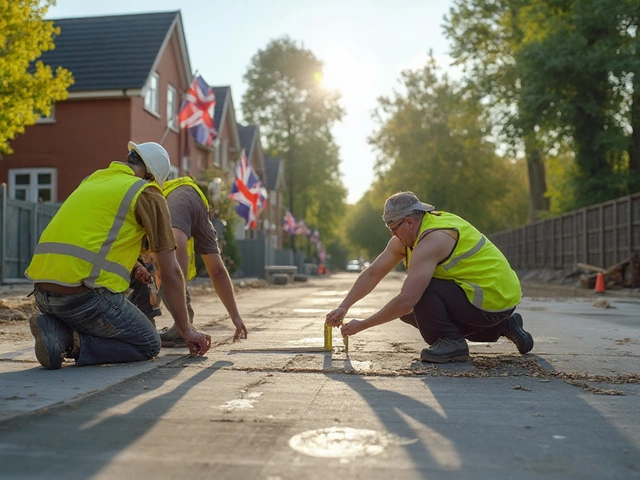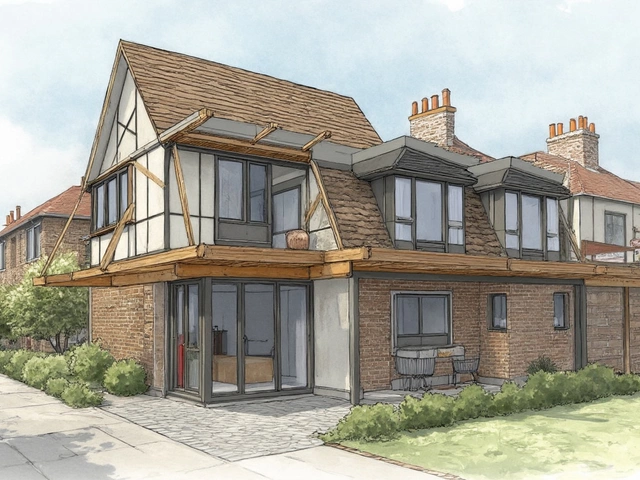Structural Settling Explained: What Every Homeowner Should Know
If you’ve ever noticed a door that sticks or a window that won’t close, you might be looking at the first hints of structural settling. It’s not just a spooky term – it’s a real, everyday issue that can affect the safety and value of your house. In this guide we’ll break down why foundations move, how to catch the warning signs early, and what you can actually do to keep everything level.
Why Does a House Settle?
Think of your home as a heavy box sitting on the ground. The soil underneath acts like a cushion, but that cushion can shrink, swell, or shift over time. Common culprits include:
- Changing moisture levels: Too much water makes the soil expand, too little dries it out and it contracts.
- Soil type: Clay soils are notorious for moving a lot, while sand is more stable.
- Weight distribution: Adding a new garage, a heavy bathtub, or even a big tree can overload a spot.
- Improper compaction: If the ground wasn’t compacted properly during construction, it can settle unevenly later.
When the ground shifts, the foundation follows, and you start seeing cracks, sloping floors, and misaligned doors.
Spotting the Signs Early
Early detection saves money. Walk around the outside of your house and look for these clues:
- Cracks that run horizontally or diagonally across walls – especially near windows.
- Gaps between the bricks and the foundation.
- Doors or windows that stick, won’t latch, or open too easily.
- Uneven floors – a simple ball test (roll a ball across the floor) can highlight low spots.
- Exterior siding that bows outward or pulls away from the house.
If you notice any of these, don’t wait. The longer you let settling go, the bigger the repair will become.
DIY Checks and Quick Fixes
Some settling issues are minor and can be handled without a professional. Here are quick steps you can try:
- Improve drainage: Clear gutters, add downspouts, and make sure the soil slopes away from the foundation by at least a 5% grade.
- Seal small cracks: Use a quality epoxy or polyurethane sealant to stop water from seeping in.
- Control moisture: In dry seasons, water the garden a bit more to keep the soil from shrinking too fast.
These actions can stop a problem from getting worse, but they’re not a cure for big moves.
When to Call the Pros
If cracks are wider than ¼ inch, if you see a noticeable tilt in the foundation, or if the floor feels bouncy, it’s time to bring in a structural engineer or foundation specialist. They’ll assess whether you need:
- Underpinning or piering: Steel piers are driven into stable soil below the existing footings to lift and hold the house.
- Slab jacking: A concrete mixture is pumped under a sunken slab to raise it back into place.
- Soil stabilization: Adding lime or cement to the soil can prevent future movement – an area where Lime Hillock’s limestone products shine.
Typical costs range from £3,000 for a simple pier job to over £15,000 for extensive underpinning, depending on house size and soil conditions.
Keeping Your Foundation Stable
Maintenance is the cheapest insurance. Some habits to adopt:
- Check your foundation’s exterior once a year for new cracks or moisture buildup.
- Maintain consistent watering around your garden – avoid sudden dry spells followed by heavy rains.
- Don’t store heavy objects on the ground directly next to the house; they can add extra pressure.
- When doing renovations, talk to your builder about load‑bearing walls and whether extra footings are needed.
By staying on top of these steps, you’ll reduce the odds of costly settlement repair down the line.
Structural settling isn’t a mystery, but it does need attention. Spot the signs, fix easy issues yourself, and know when a professional should step in. With the right care, your home stays level, safe, and ready for whatever you throw at it.
How Long Does a New Building Take to Settle? Real Numbers & What to Expect

Curious about how long it takes for a new building to settle? This article breaks down real timelines, key factors that impact settling, and what homeowners can expect in the first several years after moving in. Get practical tips on how to spot harmless settling versus issues that need attention. Save yourself stress by learning what's truly normal during your home's settling phase.
read more



